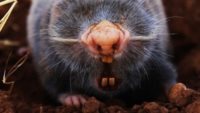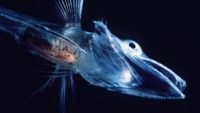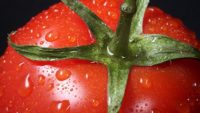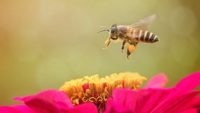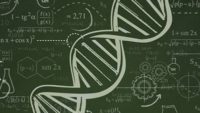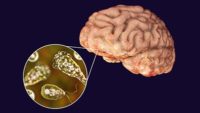By Harry F. Sanders, III One of the problems inherent in the evolutionary dogma is going from a single-celled organism, once such a thing exists, to a multi-celled organism. …read more Source: AIG Daily
You might recall that viruses act as miniscule infectious agents. They forcibly enter a cell and conquer its molecular machinery. The cell is instructed, via viral DNA, to stop making its normal cellular parts and instead make more viruses by transcription and replication. As more and more viral parts are manufactured, the cell breaks apart—its wall rupturing in a process called lysis. Then newly-formed viruses are released a… More… …read more Source: icr.org
Steve Turpin, O.D., M.S., a Doctor of Optometry, wrote about an alarming increase in nearsightedness in developed societies on behalf of the Evolution Institute (EI). His conclusions actually contradict Darwinian evolution.1 In fact, everything Dr. Turpin writes would have nothing to do with evolution were it not for his evolutionary conception of human history. Turpin, like many evolutionists, equate the primitive human ancestors that… More… …read more Source: icr.org
Nobody saw her “billions of years of research and development”, yet ‘she’ is credited with nature’s marvels of engineering. Read More
By Troy Lacey Researchers studying mole-rats and the East African root rat discovered that several had pain insensitivity to different irritants (referred to as “algogens”). …read more Source: AIG Daily
By Harry F. Sanders, III A recent tweet asserted, “Evolution has been directly observed both in the lab and in the field. If you had done any research whatsoever, you would know this.” …read more Source: AIG Daily
In 2005, biologists were stunned to discover that humans might not all look the same to honeybees. A study has found that bees can learn to recognize human faces in photos, and remember them for at least two days.1 Twelve years later, Science magazine published an article describing the “unprecedented cognitive flexibility” of bees using a ball to get a reward.2 Biologist Loukola said, More… …read more Source: icr.org
When the peacock vibrates its colourful fan of tail feathers, the ‘eyespots’ behave differently from the rest of the feathery background, leaving the peahen mesmerized. Read More
Lubrication in a dusty environment can be a problem, so engineers have turned to the sandfish skink lizard for a solution. Read More
By Troy Lacey It was assumed the Antarctic blackfin icefish’s clear blood adapted to a cold water environment. A new study reveals just how radical this “adaptation” is. …read more Source: AIG Daily
The little appendage that can cause a lot of pain and confusion. …read more Source: creation.com
Evolutionary theory is based on the faulty assumption that chance random processes can produce highly ordered complex systems, and this theory routinely fails to reveal scientific reality. A new secular study that applies engineering principles in the analysis of spider-web physics, related to the design concept of “power amplification,” has not only been highly successful, but also glorifies the amazing genius of God the Creator.More… …read more Source: icr.org
By Ken Ham I’ve written about a lot of strange things on this blog, but I never thought gender-fluid tomatoes—from Australia, my home country, no less—would be one of them. But that’s where our culture has ended up—having a discussion about how a strange plant, a species of bush tomato from the Outback, somehow shows that the “sexual binary” is “a fallacy.” Various reproductive strategies are God’s designs to help organisms continue to reproduce, ensuring the survival of their kind, in an ever-changing fallen world. The researchers, however, go further than just describing the plant and naming it Solanum plastisexum. [More]
Evolution of bones in middle ear in mammals unheard of. …read more Source: creation.com
Could DNA building blocks have formed in a primordial soup? How to think about chemical evolution papers. Read More
By Dr. Gordon Wilson It was recently discovered that double-stranded microRNA (miRNAs) fed to honey bees conferred resistance to certain viral diseases that they were exposed to. …read more Source: AIG Daily
What is a liliger? Why can all cats today interbreed? And why does the Bible teach rapid speciation? …read more Source: creation.com
Stem cell-like ancestors of sponges only make early life more complex, and the probability of evolution less likely. Read More
Increasing numbers of evolutionists question the validity of their own theory of evolution everyone is taught in school. A recent challenge came from a paper with the intriguing title, “What is mutation? A chapter in the series: How microbes ‘jeopardize’ the modern synthesis.”1 Some may ask: What is the “modern synthesis?” The modern synthesis is the technical name for the clas… More… …read more Source: icr.org
The scientific literature contains over 100 examples of original biomaterials in fossils.1 These include a few decades’ worth of reports, using at least a few dozen independent techniques to target specific vertebrate biochemicals—such as the hardy protein collagen. One team of skeptics recently published a report trying to disprove the existence of collagen in supposedly ancient bone. They made the c… More… …read more Source: icr.org
By Ken Ham I’m sure at some point you’ve heard the tired, old claim that humans and chimps are 98% similar or share 98% of their DNA. This claim is made in an attempt to prove the supposed evolutionary cousinship of humans and chimps. It’s made frequently, but that “fact” is anything but a fact—it’s simply not true. Dr. Georgia Purdom, a molecular geneticist, recently sat down with Pure Talk for an interview regarding creation, evolution, chimp and human DNA, and more. She brought her scientific expertise to bear on this question, among others. I encourage you to watch this [More]
Botanists have known for decades that plants aren’t just static entities that simply photosynthesize and reproduce. Indeed, plants read the living world around them with an incredible display of clearly designed sensory features that continues to amaze scientists.1-3 Plants read the living world … More… …read more Source: icr.org
By Ken Ham When you think of fungi, you probably don’t automatically think “smart”—especially considering they don’t have brains! But these incredible organisms are indeed “smart,” in the sense that they are designed to do what they do, and what they do, they do well. (Some of you may have heard me give a fun saying like this to kids in one of my live presentations!) The more we look at what God has made, the more obvious it is that we are without excuse if we refuse to acknowledge the Creator (Romans 1:20). And fungi are just one more [More]
“The greatest absence of evolution ever reported” is hailed as support for evolution. Read More
by Brian Thomas, Ph.D., and Timothy Clarey, Ph.D. Evolutionary narratives insist that kangaroos, and the marsupials they represent, evolved millions of years ago in Australia. Supposedly, that’s why today they only live there. In contrast, Genesis teaches that all animals—including kangaroos—migrated to their present locations from the Ark’s landing place “on the mountains of A… More… …read more Source: icr.org
By Jonathan Augusta The Creator made all creatures, including amoebas, with variation and plasticity in their genome for global differences of climate, terrain, and environment. …read more Source: AIG Daily
Modern science shows that Neandertals are fully human. …read more Source: creation.com























